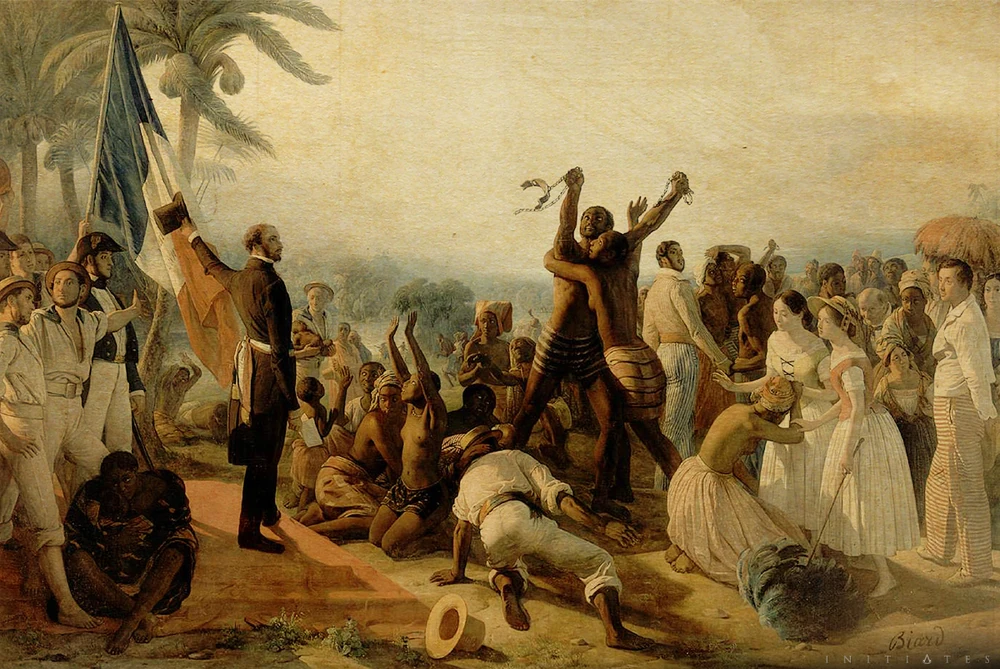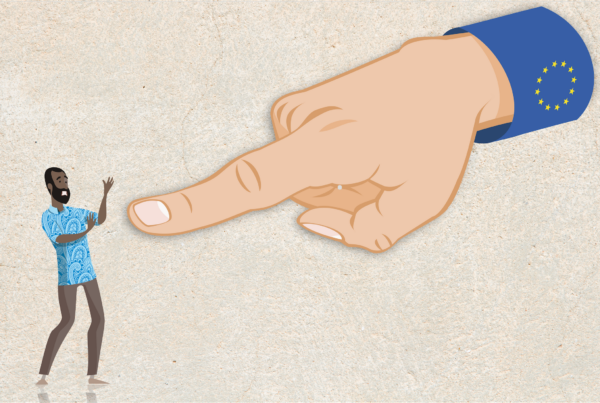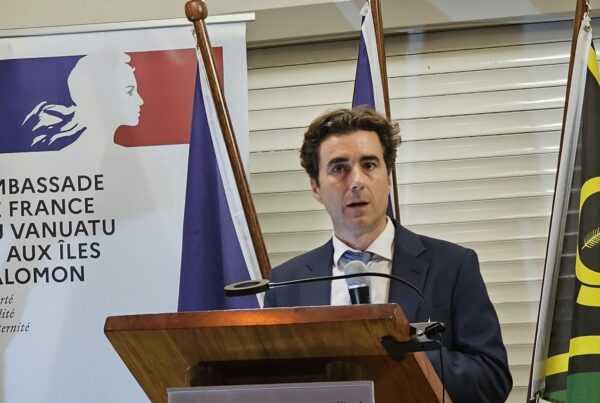Read the original publication (inclut une version française)
DONDON, Haiti — Adrienne Present steps into the thin forest beside her house and plucks the season’s first coffee cherries, shining like red marbles in her hands.
The harvest has begun.
Each morning, she lights a coal fire on the floor of her home in the dark. Electricity has never come to her patch of northern Haiti.
She sets out a pot of water, fetched from the nearest source — a mountain spring sputtering into a farmer’s field. Then she adds the coffee she has dried, winnowed, roasted and pounded into powder with a large mortar called a pilon, the way she was taught as a child.

Coffee has been the fulcrum of life here for almost three centuries, since enslaved people cut the first French coffee plantations into the mountainsides. Back then, this was not Haiti, but Saint-Domingue — the biggest supplier of coffee and sugar consumed in Parisian kitchens and Hamburg coffee houses. The colony made many French families fabulously rich. It was also, many historians say, the world’s most brutal.
Ms. Present’s ancestors put an end to that, taking part in the modern world’s first successful slave revolution in 1791 and establishing an independent nation in 1804 — decades before Britain outlawed slavery or the Civil War broke out in America.
But for generations after independence, Haitians were forced to pay the descendants of their former slave masters, including the Empress of Brazil; the son-in-law of the Russian Emperor Nicholas I; Germany’s last imperial chancellor; and Gaston de Galliffet, the French general known as the “butcher of the Commune” for crushing an insurrection in Paris in 1871.
The burdens continued well into the 20th century. The wealth Ms. Present’s ancestors coaxed from the ground brought wild profits for a French bank that helped finance the Eiffel Tower, Crédit Industriel et Commercial, and its investors. They controlled Haiti’s treasury from Paris for decades, and the bank eventually became part of one of Europe’s largest financial conglomerates.
Haiti’s riches lured Wall Street, too, delivering big margins for the institution that ultimately became Citigroup. It elbowed out the French and helped spur the American invasion of Haiti — one of the longest military occupations in United States history.
Yet most coffee farmers in Ms. Present’s patch of Haiti have never had running water or septic tanks. They have crude outhouses and cook their diri ak pwa — rice and beans — over campfires. They deliver their coffee harvests on the backs of thin horses with palm-leaf saddles and rope reins, or hoist the loads on their heads to carry them, by foot, for miles on dirt roads.
Many, like Ms. Present’s husband, Jean Pierrelus Valcin, can’t read, having never “sat on a school bench,” as the Haitian Creole saying goes. All six of the couple’s children started school, but none finished, given the steep fees charged in Haiti, where the vast majority of education is private because the country never built more than a tiny public school system.
“There is nothing here,” said Mr. Valcin, who is losing his eyesight but can’t afford to visit a specialist. “Our children have to leave the country to find jobs.”
He used a term you hear often in Haiti — mizè. More than poverty, it means misery.

Violence. Tragedy. Hunger. Underdevelopment. These bywords have clung to Haiti for more than a century. Kidnappings. Outbreaks. Earthquakes. The president assassinated — this time in his bedroom.
How is it possible, many ask, that Haiti shares an island with the Dominican Republic, with its underground subway system, health care coverage, public schools, teeming resorts and impressive stretches of economic growth?
Corruption is the usual explanation, and not without reason: Haiti’s leaders have historically ransacked the country for their own gain,legislators have spoken openly on the radio about accepting bribes and oligarchs sit atop lucrative monopolies, paying few taxes. Transparency International ranks it among the most corrupt nations in the world.
But another story is rarely taught or acknowledged: The first people in the modern world to free themselves from slavery and create their own nation were forced to pay for their freedom yet again — in cash.
The Haitians had ample reason for alarm. Two decades earlier, Napoleon had tried to destroy them, sending one of the largest expeditions of warships ever dispatched by France, with his brother-in-law at the helm. The Haitians won and declared independence. Napoleon lost more troops than he did at Waterloo and withdrew.
But rich French colonists continued to press to reconquer the territory, and they found another sympathetic ear when the Bourbon monarchy returned to power. One minister of the navy, a former colonist and prominent defender of slavery, even drafted a new plan to put Haitians back in bondage or “crush them” with a still larger army.
No country could be expected to come to Haiti’s defense. The world powers had frozen it out, refusing to officially acknowledge its independence. American lawmakers in particular did not want enslaved people in their own country to be inspired by Haiti’s self-liberation and rise up.
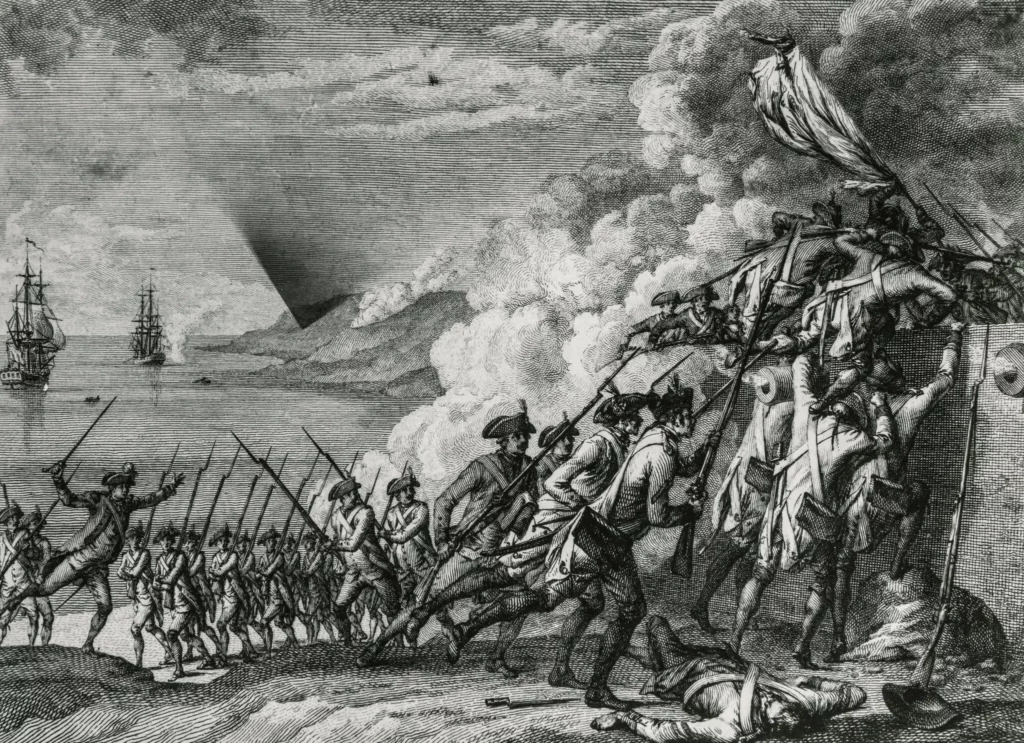
So, Haiti’s president, eager for the trade and security of international recognition, bowed to France’s demands. With that, Haiti set another precedent: It became the world’s first and only country where the descendants of enslaved people paid reparations to the descendants of their masters — for generations.
It is often called the “independence debt.” But that is a misnomer. It was a ransom.
The amount was far beyond Haiti’s meager means. Even the first installment was about six times the government’s income that year, based on official receipts documented by the 19th-century Haitian historian Beaubrun Ardouin.
But that was the point, and part of the plan. The French king had given the baron a second mission: to ensure the former colony took out a loan from young French banks to make the payments.
This became known as Haiti’s “double debt” — the ransom and the loan to pay it — a stunning load that boosted the fledgling Parisian international banking system and helped cement Haiti’s path into poverty and underdevelopment. According to Ardouin’s records, the bankers’ commissions alone exceeded the Haitian government’s total revenues that year.
And that was only the beginning. The double debt helped push Haiti into a cycle of debts that hobbled the country for more than 100 years, draining away much of its revenue and chopping away at its ability to build the essential institutions and infrastructure of an independent nation. Generations after enslaved people rebelled and created the first free Black nation in the Americas, their children were forced to work, sometimes for little or even no pay, for the benefit of others — first the French, then the Americans, then their own dictators.
Two centuries after French warships blew their terrifying cannons from Port-au-Prince’s harbor to celebrate the debt, the echoes from that moment still wash across the country in its slums, bare hospitals, crumbling roads and empty stomachs, even in the countryside, once considered the most lucrative and productive in the world.
“This was a poor country that was always impoverished after 300 years of exploitation,” Cedieu Joseph said over the buzz of cicadas in his coffee garden in Dondon, the town in northern Haiti where Ms. Present lives. He manages a coffee cooperative named after a Haitian revolutionary hero from the area, and calls the so-called independence debt a modern whip, wielded by France to punish its former colony for wanting, and winning, its freedom.
“The slaves fought for our independence,” he said. “To make them pay for that independence again, it was setting up another form of slavery.”
Since then, the double debt has largely faded into history. France has repeatedly downplayed, distorted or buried it. Only a few scholars have examined it deeply. No detailed accounting of how much the Haitians actually paid has ever been done, historians say. Even in Haiti, debates over its effect on the country’s economy, development and political destiny continue today.
The New York Times spent months sifting through thousands of pages of original government documents, some of them centuries old and rarely, if ever, reviewed by historians. We scoured libraries and archives in Haiti, France and the United States to study the double debt and its effect on Haiti, financially and politically.
In what leading historians say is a first, we tabulated how much money Haitians paid to the families of their former masters and to the French banks and investors who held that first loan to Haiti, not just in official government payments on the double debt but also in interest and late fees, year after year, for decades.
We found that Haitians paid about $560 million in today’s dollars. But that doesn’t nearly capture the true loss. If that money had simply stayed in the Haitian economy and grown at the nation’s actual pace over the last two centuries — rather than being shipped off to France, without any goods or services being provided in return — it would have added a staggering $21 billion to Haiti over time, even accounting for its notorious corruption and waste.
For perspective, that’s much bigger than Haiti’s entire economy in 2020.
We shared our findings and analysis with 15 leading economists and financial historians who study developing economies and how public debt affects their growth. All but one either agreed with our $21 billion estimate, said it was squarely within the range of possibilities, or considered it conservative. A few suggested additional ways of modeling, which mostly showed far bigger long-term losses for Haiti.
The reason is simple: Had the money not been handed over to Haiti’s former slaveholders, it would have been spent in the Haitian economy — by the coffee farmers, laundresses, masons and others who earned it. It would have gone to shops, school fees or medical bills. It would have helped businesses grow, or seeded new ones. Some of the money would have gone to the government, possibly even to build bridges, sewers and water pipes.
That spending pays off over time, boosting a country’s economic growth. It’s impossible to know with any certainty what Haiti’s economy would have looked like, and given the history of self-dealing by officials, some historians say the needs of poor farmers in places like Dondon would never have been priorities anyway.
But several others said that without the burden of the double debt, Haiti might have grown at the same rate as its neighbors across Latin America. “There is no reason why a Haiti free of the French burden could not have,” said the financial historian Victor Bulmer-Thomas, who studies the region’s economies. André A. Hofman, an expert on Latin America’s economic development, also called this scenario “very reasonable.”
In that case, the loss to Haiti is astounding: about $115 billion over time, or eight times the size of its economy in 2020.
Put another way, if Haiti had not been forced to pay its former slave masters, one team of international scholars recently estimated, the country’s per capita income in 2018 could have been almost six times as large — about the same as in its next-door neighbor, the Dominican Republic.
They called the burden imposed on Haiti “perhaps the single most odious sovereign debt in history.”
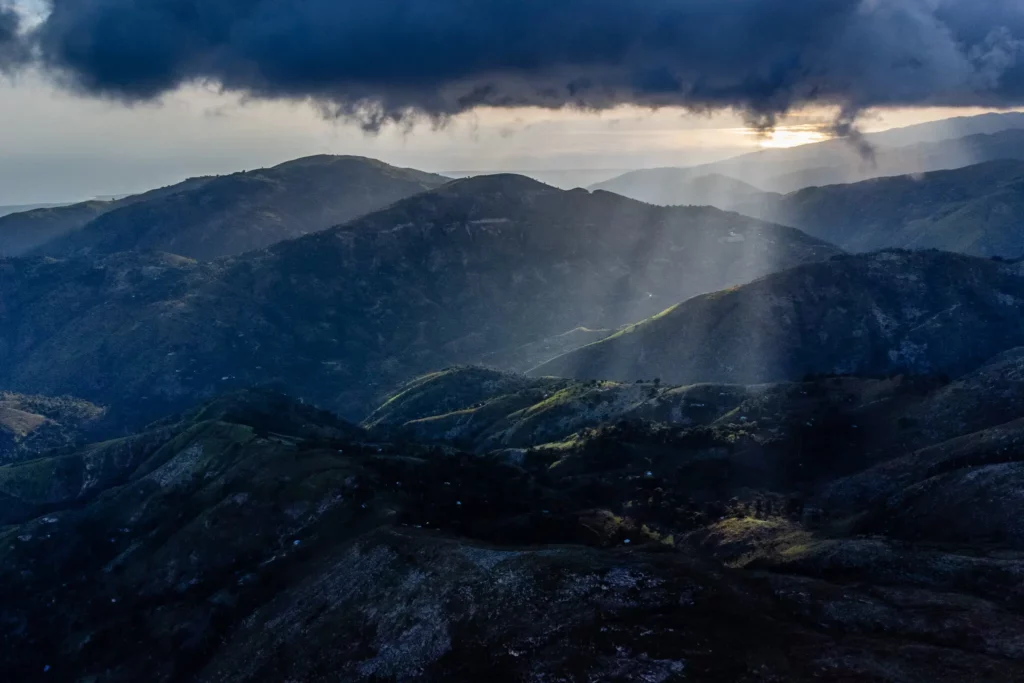
The Times calculated the impact of the double debt alone — the reparations to colonists and the initial loan to pay them.
But Haiti’s troubles didn’t end there.
The double debt helped set off a cascade of privation, budgetary shortfalls and onerous foreign loans that shaped the country into the 20th century and beyond.
Though Haiti’s government made the last payments connected to its former slaveholders in 1888, the debt was far from settled: To finish paying it off, Haiti borrowed from other foreign lenders who, in league with a few self-serving Haitian officials indifferent to their people’s suffering, laid claim to a significant share of the nation’s income for decades to come.
Depleted after decades of paying France, Haiti took out even more loans after that. By 1911, $2.53 out of every $3 Haiti took in from coffee taxes, its most important source of revenue, went to paying debts held by French investors, according to Gusti-Klara Gaillard and Alain Turnier, Haitian historians whose accounts are consistent with ledgers found in the diplomatic archives in suburban Paris.
That left precious little to run a country, much less build one.
In some years of the United States occupation, which began in 1915, more of Haiti’s budget went to paying the salaries and expenses of the American officials who controlled its finances than to providing health care to the entire nation of around two million people.
Even after the Americans relinquished fiscal control in the late 1940s, Haitian farmers were living on a diet that was “often close to the starvation level,” United Nations officials reported. As few as one in six children went to school.
Debt still shrouded the country. In the 1940s, Haitian children lucky enough to attend school were asked to bring coins to class to finish paying the avalanche of loans that had weighed on their nation since its infancy.
Little of this history is recognized by France. The reparations Haitians were forced to pay their former masters for generations are not covered in French schools, researchers say. And when a Haitian president began loudly raising the subject, the French government scoffed and tried to squelch it.
In 2003, Jean-Bertrand Aristide, a former priest who became the first democratically elected president after decades of dictatorship, launched a campaign demanding that France repay the money it had extracted, with television ads, street banners and a legal team putting together the elements of an international lawsuit. The French government responded by assembling a public commission to study relations between the two countries, but quietly instructed it “not to say a word in favor of restitution,” Thierry Burkard, the French ambassador to Haiti at the time, recently told The New York Times in an interview.
The commission dismissed Mr. Aristide’s claims as the ploys of a demagogue and portrayed the independence debt as a “treaty” between Haiti and France — making only passing mention of the French warships looming off the Haitian coast to enforce the demand in an annex to a 2004 report.
A month later, the French government helped remove Mr. Aristide from power, saying it was trying to prevent Haiti, which was heaving with turmoil, from spinning into civil war. But while French officials have long said the restitution claim was not the reason for Mr. Aristide’s ouster, Mr. Burkard acknowledged it was “probably a bit about that, too.”
“It would have set a precedent” for many other countries, he said.
Despite Mr. Aristide’s removal, the issue has not gone away. In May 2015, François Hollande, France’s president, stunned an audience gathered for the opening of a memorial center on the slave trade in Guadeloupe when he referred to Haiti’s payments to its former slave masters as “the ransom of independence.”
“When I come to Haiti,” he continued, “I will, for my part, pay off the debt we have.”
The crowd, which included Haiti’s president at the time, instantly stood up in loud applause.
“People cried, African heads of state cried,” said Michaëlle Jean, the Haitian-born former secretary-general of the International Organization of la Francophonie, who was present at the speech. “It was immense.”
The excitement was short-lived.
A few hours later, Mr. Hollande’s aides clarified to news organizations that he was speaking only of the “moral debt” France owed to Haiti, not of any financial compensation. The French government maintains the same position today.
“France must face up to its history,” the French Foreign Ministry told The Times, expressing “solidarity” with Haiti. Even so, it has not calculated how much money France received from Haiti over generations.
“That’s the job of historians,” the ministry said.
Haiti’s payments to former colonists were supposed to go solely to individual property owners, not to the French government itself. Yet the state ended up with a cut anyway. The Times unearthed several government documents from the early 1900s revealing that 2 million francs from the descendants of Haiti’s enslaved people, or $8.5 million in today’s currency, landed in French state coffers. (France’s treasury declined to comment, saying its archives dated from only 1919.)
Some of the families that received payments over decades remain European royalty and French aristocracy. Their descendants include Maximilian Margrave of Baden, a first cousin of Prince Charles; the French businessman Ernest-Antoine Seillière de Laborde, who once ran the country’s powerful association of big businesses; and Michel de Ligne, the Belgian prince whose ancestors were close to Catherine the Great and built a castle known as the “Belgian Versailles,” where hundreds of Jewish children were hidden during the Holocaust.
The Times tracked down and spoke to more than 30 descendants of families that received payments under Haiti’s independence debt. Most said they had never heard of it.
“This is part of my family history I never knew,” Nicolaus Herzog von Leuchtenberg, the Duke of Leuchtenberg and a sixth-generation descendant of Joséphine de Beauharnais, Napoleon’s first wife, said in a phone interview from Germany.
The debt was not shouldered by all Haitians equally. The country’s small elite, who today live in gated mansions and travel regularly for vacations in Paris and Miami, remained largely untouched. It was the poor who paid — and continue to pay, many argue, because the country has never had enough schools, clean water, electricity and other basics.
“As of today, we suffer the consequences of the debt,” said Dr. Francis Saint-Hubert, a doctor who worked on Mr. Aristide’s restitution campaign and teaches at the Aristide Foundation for Democracy’s medical school in Haiti. On a recent visit to a public hospital, he found the cupboards bare of the most elemental supplies, like blood pressure cuffs, or even thermometers.
“We are still paying,” he said, “and sometimes with our lives.”
The documents reviewed by The Times show how that debt came to be, and how its impact stretched across history. The earliest records, in fact, date to a time before the nation of Haiti even existed.
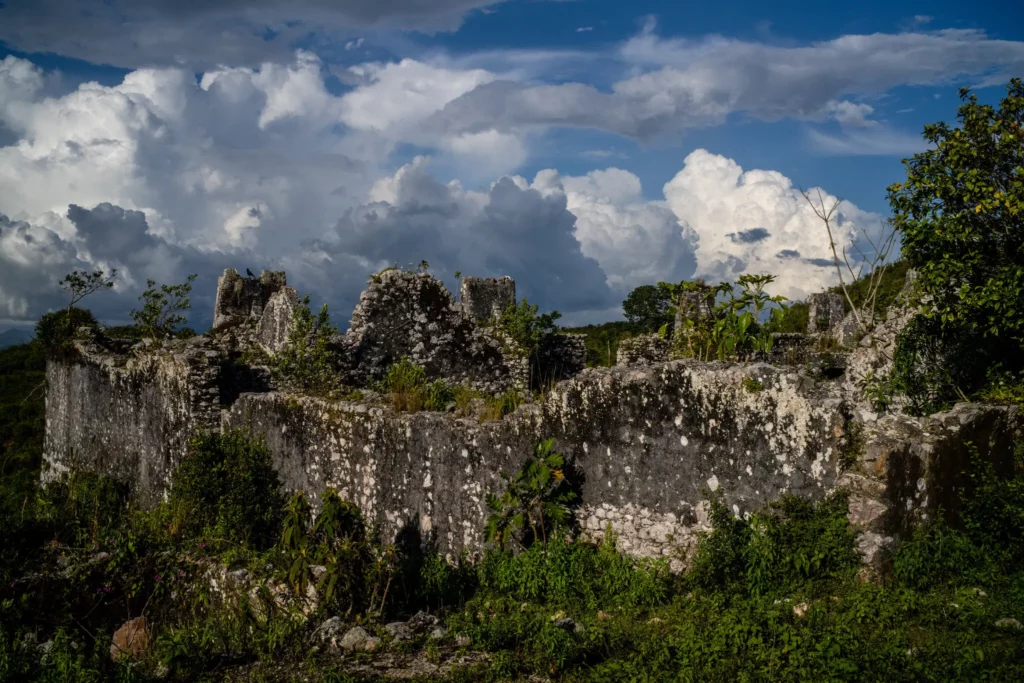
The most profitable colony in the world
During slavery, Haiti brimmed with such wealth that its largest and most important city, Cap-Français, was known as the “Paris of the Antilles,” bursting with bookstores, cafes, gardens, elegant public squares and bubbling fountains. The Comédie du Cap sat 1,500 people and put on 200 performances a year — many direct from Paris — as well as regular dances and balls. The town’s slate-roofed houses, with their whitewashed walls and courtyards, rented for four times the price of a ground-floor apartment in central Paris, according to the historian John Garrigus. The harbor, choked with garbage today, was perennially full of ocean-worthy sailing ships.
All this happened quickly. The mountainous colony, tucked into the western part of the island of Hispaniola, was colonized by France later than most of the Caribbean, yet in less than a century its plantations were the leading suppliers of sugar to Europe. Only in the late 1730s were the colony’s first coffee plantations cut into the mountainsides in Dondon, where Ms. Present still farms today.
Within decades, the colony’s reliance on slave labor swelled. Between 1785 and 1790, Saint-Domingue absorbed 37 percent of the entire trans-Atlantic slave trade. Many kidnapped Africans died within a few years of being pulled from the putrid, crowded bowels of slave ships and branded with their new masters’ names or initials.
The survivors made up an astounding 90 percent of the colony’s total population, kept in line by hunger, exhaustion and public acts of extreme violence. Crowds of colonists gathered in one of the island’s fancy squares to watch them be burned alive or broken, bone by bone, on a wheel.
Sadistic punishments were so common they were given names like the “four post” or the “ladder,” historians note. There was even a technique of stuffing enslaved people with gunpowder to blow them up like cannonballs, described as burning “a little powder in the arse,” according to French historian Pierre de Vaissière, who cited a 1736 letter from a colonist.
“O land of mine, is there any other on this planet whose soil has been more soaked in human blood?” asked the Baron de Vastey, a government officer in the northern part of Haiti in his 1814 work “The Colonial System Unveiled.”
“To France’s shame, not a single one of the monsters,” he wrote, singling out plantation owners and their managers by name, has experienced “even the slightest punishment for his crimes.”
France strengthened its laws forbidding the mutilation or killing of enslaved people in the 1780s, a sign of how openly cruel some plantation owners had become. A few years later, 14 enslaved people from a remote coffee plantation made the long trip to the Cap-Français courthouse to test the new laws. Their master, a rich planter named Nicolas Lejeune, had tortured two women whom investigators found in chains, their legs charred from burns. They died soon after, yet Lejeune was acquitted.
The only thing that will prevent “the slave from stabbing the master” is “the absolute power he has over him,” Lejeune wrote to the prosecutor, according to historian Malick Ghachem. “Remove this brake and the slave will dare anything.”
The enslaved people of Saint-Domingue rose up late one August evening in 1791, starting what some historians call the largest slave uprising in history.
Little documentation about the early days of the revolution exists. One enslaved person confessed, most likely under torture, that a clandestine meeting took place in the woods, attended by 200 others from across the north. The rebels later held a ceremony, vowing to destroy their oppressors and the tools of their subjugation.
They did it with whatever weapons they could grab or fashion and — most effectively — with fire, burning sugar cane fields and plantation buildings. The cloud of black smoke that engulfed Cap-Français made the sky glow after sunset like the northern aurora, one French surgeon recounted.
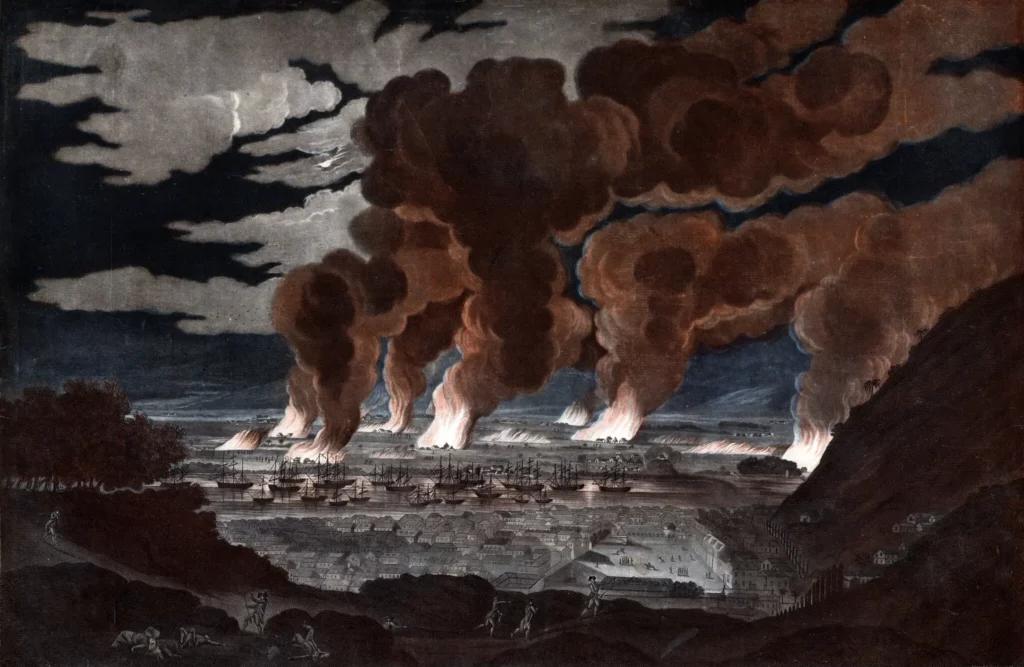
Within two weeks, every plantation within 50 miles of Cap-Français was reduced to ash and the rebels, many dressed in rags, organized into three armies, with hundreds on horseback. One leader became infamous for wielding the same cruel punishments slaveholders had used, whipping colonists hundreds of times and hacking off their hands.
After two years, the French commissioners of the colony announced that all enslaved people would be free and become French citizens. It was practical — they needed recruits to defend the colony against attacks, including from Britain or Spain, which controlled the eastern side of Hispaniola. But it was also ideological, some historians say, reflecting the revolutionary ideals that had erupted back home.
Soon after Louis XVI and Marie Antoinette were guillotined in France, the revolutionary government abolished slavery in 1794, not just in Saint-Domingue but in all French colonies. The historian Laurent Dubois calls that the most dramatic change brought about by the French Revolution, yet for enslaved people of Saint-Domingue, he says, “it was only the end of the beginning of a long struggle for freedom.”
Napoleon, who seized power in 1799, had very different views on slavery. In December 1801, he dispatched some 50 ships to Saint-Domingue to reimpose the French colonial empire and “rid us of these gilded Africans,” as he put it to the commander, his brother-in-law. Napoleon reinstated the slave trade in France’s other colonies and thought it would take three months to vanquish the Haitians.
Instead, as many as 50,000 French soldiers, sailors and colonists died, according to the historian Philippe Girard. Almost two years later, the ragged remains of Napoleon’s forces pulled out of the charred harbor of Cap-Français — later renamed Cap-Haïtien.
The declaration of independence for Haiti — the Indigenous name that revolutionaries reclaimed for their country — offered enslaved people hope from Brazil to South Carolina, noted the historian Julius S. Scott.
But for their masters, it set a chilling precedent.
“The peace of 11 states in this union will not permit the fruits of a successful Negro insurrection,” Senator Thomas Benton of Missouri told his fellow lawmakers in Congress, explaining why the United States should not recognize Haiti’s independence. “It will not permit Black consuls and ambassadors to establish themselves in our cities, and to parade through our country.”
Or, as Senator John Berrien of Georgia said, official relations with Haiti would “introduce a moral contagion” that would make even the most horrifying pestilence seem “light and insignificant.”
The ultimatum
Haiti knew the French would return, a premonition that still towers in stone over the country from a green peak above Dondon’s coffee farms. It is called the Citadelle, the largest military fortress in the Caribbean and arguably Haiti’s most important building. Its gray walls, now patched with orange lichen, are as thick as 16 feet and as high as 147 feet. From one angle, they sweep like the prow of a monstrous ocean tanker bearing down on any flimsy vessels below. More than 160 cannons point threateningly from its openings and ledges.
Some 20,000 peasants — conscripted by the new Haitian government — built it in just 14 years, beginning shortly after independence. It was just one of 30 forts ordered up by Jean-Jacques Dessalines, Haiti’s first ruler, in preparation for what he called “an eventual offensive return of the French.”
That day finally came, 21 years after independence.
On July 3, 1825, a French warship, accompanied by two other ships, sailed into the port of Port-au-Prince, Haiti’s capital.
They were sent by Charles X, the newly installed king of France, to enforce an ordinance: In exchange for 150 million francs, and an enormous reduction in custom taxes on French goods, France would recognize its former colony’s independence.
If the Haitian government did not accept the ordinance, exactly as written, the Baron of Mackau, Ange René Armand, had orders to declare Haiti an “enemy of France” and blockade its ports. In his own handwritten account, the baron said he had been instructed to launch military operations that “can no longer be stopped.”

“I am not a negotiator,” he told Haiti’s president, Jean-Pierre Boyer, according to the baron’s account, which was published in France this year. “I am only a soldier.”
Just up the coast, 11 more French warships waited. One of the Haitian president’s top generals rushed a letter to him in the middle of the talks, saying his men in the coastal mountains northwest of Port-au-Prince had spotted the French fleet.
The idea of payment had been raised before, first by the Haitian president in 1814 as a way of fending off what many saw as an imminent French invasion. Frozen out of trade with France and at times the United States, Boyer himself had discussed the idea, in exchange for international recognition of Haiti’s independence.
But those were diplomatic negotiations. Now, a crippling amount was being demanded under threat of war. The French demand was “excessive” and beyond “all our calculations,” Boyer said, according to the baron’s account.
But after three days of meetings, he relented.
Some historians dispute the notion that Boyer accepted the demands merely to protect his people from war. Alex Dupuy, a Haitian American scholar, argues that the president wanted to enshrine the property rights of the Haitian elite who had taken over land, and knew the costs would be offloaded onto the poor masses. “One has to understand the pressure France put on Haiti, but also the interests of the Haitian ruling class,” he said.
The ordinance broke new ground. Typically, historians say, war reparations are imposed on the losers. Victorious European nations forced France to pay them after the Napoleonic Wars in 1815, a decade before the Baron of Mackau set foot in Haiti. After World War I, Allied nations imposed huge penalties on Germany in the Treaty of Versailles, fueling bitter resentment that carried into World War II.
But in this case, the victors — who had first thrown off their shackles, and then defended themselves by beating back Napoleon’s forces — were the ones to pay. Instead of remedying, or even acknowledging, the abuses of slavery, the ordinance focused on the financial losses of the former masters.
In the coming decades, some nations, like Britain, abolished slavery and paid slaveholders for their losses, while also requiring newly freed people to continue working for their former masters for a number of years without pay. As the Swiss historian Frédérique Beauvois points out, the United States was an outlier: It freed people after the Civil War, and granted no compensation to their enslavers.
But Haiti’s case was unique. The Haitians had already freed themselves.
In the other cases, governments paid slaveholders to ease their opposition to abolition laws and to ensure that the economy would not crash, she said. But with Haiti, France demanded payment from those who had been in chains.
“It was to punish them,” Ms. Beauvois said. “It was vengeance.”
The price tag was huge. In 1803, France sold Louisiana to the United States for 80 million francs — just over half what it demanded from Haiti. And back then, Louisiana encompassed a large sweep of the continent, stretching across all or parts of 15 modern states. Haiti was 1/77 the size.
The Haitian government didn’t have enough money to pay even the first of five installments.
So the baron brought three Haitian diplomats with him back to France. There, they sealed a 30 million franc loan. But after the group of bankers, which included the Rothschilds, took its commissions, Haiti got only 24 million francs.
Instead of 150 million, Haiti suddenly owed 156 million, plus interest.
It was one of the first of many loans by French bankers to foreign governments that transformed Paris into a hub of international finance. And it became a prototype for controlling colonies after their independence, fulfilling the vision of the baron, who later became France’s minister of the navy and colonies.
“Under such a regime,” he wrote, “Haiti would undoubtedly become a highly profitable and costless province of France.”
‘Reduced by Death’
In Paris, the king named a commission to sort through more than 27,000 demands for compensation that flooded in decades after the Haitian revolution.
The biggest single payout went to the family of one of the biggest slaveholders in Haiti’s history, Jean-Joseph de Laborde, a banker for Louis XV, according to Oliver Gliech, a German historian who has created a database of former colonists.
In the late 18th century, Laborde shipped nearly 10,000 Africans to Haiti in his slave boats and had more than 2,000 enslaved people on his plantations there, many of whom died. French revolutionaries beheaded him in 1794, but two of his children, Alexandre and Nathalie, received about 350,000 francs, or about $1.7 million today, for his claimed losses in Haiti.
Officially, former colonists got just one-tenth of what they lost. But Laborde’s son, Alexandre, a fervent abolitionist, said in an 1833 parliamentary debate that the compensation payments were so large they actually exceeded the plantation owners’ losses.
“With half of the compensation I would receive, I could buy the three houses I owned,” he told lawmakers.
By law, the commission could compensate Frenchmen only for lost real estate. But it was clear that “slaves were almost the only value of Saint-Domingue” and should be part of the calculus, Jean-Marie Pardessus, an official who helped set the rules on compensation, told his fellow lawmakers.
What little is known about the commission’s decisions comes from a 990-page volume of its original handwritten notes discovered in the French archives in Roubaix in 2006.
Some former colonists submitted letters from slave ship captains and slave merchants as proof of the kidnapped Africans they had purchased on the eve of the revolution. Conversely, commissioners subtracted the value of enslaved people colonists took with them when fleeing.
In 1828, the commission heard from Philippine Louise Geneviève de Cocherel. Her father, the recently deceased Marquis of Cocherel, had owned six properties, including a sugar plantation and a coffee plantation.
Cocherel had been singled out by the Baron de Vastey in his treatise on the horrors of slavery, but in flowing handwriting, the commissioner’s note taker recorded the marquis’s losses with bureaucratic dispassion:
His sugar and cotton plantations had been “reduced by death” to 220 enslaved people, valued at 3,425 francs per head.
The coffee plantation’s slaves had been “reduced to 40 by death,” their worth put at 3,250 francs each. On the ranch, the seven enslaved people had been “reduced to” six, worth 2,500 per head.
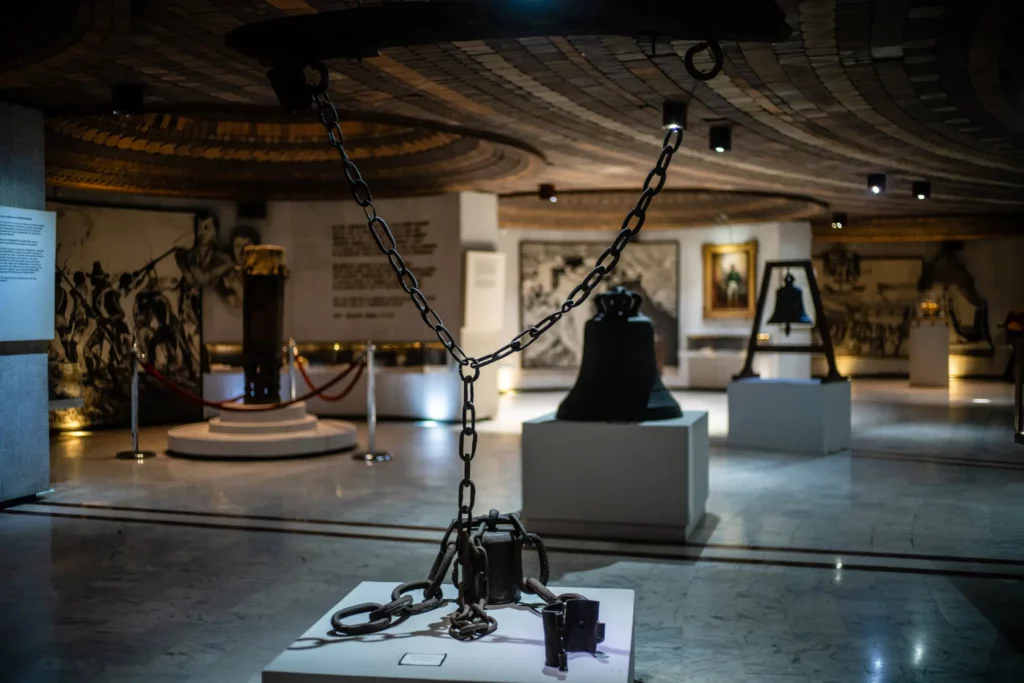
In 1789, before the slave rebellion, the marquis bought 21 recently kidnapped Africans before leaving for France. But he didn’t indicate where they were put to work, so the commission valued them at an average rate, down to the cent: 3,366.66 francs.
In the end, it awarded Cocherel’s daughter, a newly married marquise, average annual payments of 1,450 francs, or about $280 in the 1860s, for dozens of years, according to government publications of the commission’s decisions.
By contrast, coffee farmers in Haiti were earning about $76 a year in 1863, Edmond Paul, a Haitian economist and politician, wrote at the time — barely enough to cover one meal a day of “the least substantive foods.”
It was reminiscent, he said, of slavery.
‘Ready to Fight’
The Haitian government ran out of money right away. To finish its first payment, it emptied its state coffers, sending it all to France on a French ship, sealed in bags inside nailed crates reinforced with iron bands. That left no money for public services.
The French government threatened war to collect the rest.
“An army of 500,000 men is ready to fight,” wrote the French foreign minister in 1831 to his consul in Haiti, “and behind this imposing force, a reserve of two million.”
In response, President Boyer passed a law commanding every Haitian to be ready to defend the country. He built the leafy suburb of Pétionville, now the bastion of the Haitian elite, up the hill from the harbor — out of range of cannon fire.
Even French diplomats recognized their threats had prompted the Haitian government to pour money into its military, rather than send it to France.
“The fear of France, which naturally wants to be paid, does not allow it to reduce its military state,” reads a 1832 letter by one French diplomat.
In late 1837, two French envoys arrived in Port-au-Prince with orders to negotiate a new treaty and get the payments flowing again. The so-called independence debt was reduced to 90 million francs, and in 1838, another warship returned to France with Haiti’s second payment, which swallowed much of Haiti’s revenues once again.
The military sucked up another large chunk, according to the French abolitionist writer and politician Victor Schœlcher. After that, there was very little left for hospitals, public works and other aspects of public welfare. Education had been assigned a mere 15,816 gourdes — less than 1 percent of the budget.
‘And Then Sells Himself’
From the very beginning, French officials knew how disastrous the payments would be for Haiti. But they kept insisting on getting paid, and for decades — with some exceptions, notably during periods of political upheaval — Haiti came up with the money.
The Times tracked each payment Haiti made over the course of 64 years, drawing from thousands of pages of archival records in France and Haiti, along with dozens of articles and books from the 19th and early 20th centuries, including by the Haitian finance minister Frédéric Marcelin.
In some years, Haiti’s payments to France soaked up more than 40 percent of the government’s total revenues.
“They don’t know which way to turn,” a French captain wrote to the Baron of Mackau in 1826 after collecting a shipment of gold from Haiti.
“After trying domestic loans, patriotic subscriptions, forced donations, sales of public property, they have finally settled on the worst of all options,” the captain wrote: 10 years of exorbitant taxes that were “so out of all proportion to the achievable resources of the country, that when each one sells all that he possesses, and then sells himself, not even half of the sums demanded will be collected.”
Yet by 1874, Haiti had paid down all but 12 million francs of its double debt to France, in large part through coffee taxes. To finish off the rest — and finally invest in the country’s development by building bridges, railroads, lighthouses — the government took out two more hefty loans from French bankers.
The borrowing ended up being a “shameless waste,” the president of Haiti’s national assembly said after a parliamentary investigation.
In an 1875 loan, the French bankers and investors took a 40 percent cut off the top. Most of the rest went to paying other debts, while the remainder lined the pockets of corrupt Haitian officials who, historians say, enriched themselves at the expense of their country’s future.
Instead of escaping mizè, Haitians slid deeper into it.
While the world’s great powers, and even some smaller countries like Costa Rica, were investing in huge public health projects to fight disease and improve their citizens’ quality of life, Haiti had scraps for things like hospitals and water pipes. In 1877, when the public works department was officially created, it had two architects and six engineers for the entire country.
One British diplomat, Spencer St. John, described Port-au-Prince at this time as perhaps “the most foul smelling, dirty and consequently fever-striken city in the world,” with human waste collecting in fetid pools on the streets that “in other countries is carried off by the sewers.”
The bank that benefited most from the 1875 loan was Crédit Industriel et Commercial, the French institution that helped finance the Eiffel Tower. And soon after its first lucrative foray into Haiti, Crédit Industriel shaped the country yet again, helping to establish the National Bank of Haiti.
Nearly the only thing Haitian about it was the name.
Headquartered in Paris, controlled by French businessmen and aristocrats, the bank took over Haiti’s treasury operations, charged a commission any time the Haitian government so much as deposited money or paid a bill, and delivered the profits to its shareholders in France. In 1894, a banner year, its French investors earned more than the Haitian government’s proposed agriculture budget for the entire country.
After 1915, when the Americans replaced the French as the dominant force in Haiti, they did more than just control the country’s national bank: They installed a puppet government, dissolved parliament at gunpoint, entrenched segregation, forced Haitians to build roads for no pay, killed protesters and rewrote the nation’s Constitution, enabling foreigners to own property for the first time since independence.
The military occupation lasted 19 years, and was justified as vital to securing American interests in the region and taming Haiti’s chaos. The United States, where lawmakers once feared the contagion effect of Haitian independence, now depicted the invasion as a civilizing mission, necessary because, as Secretary of State Robert Lansing wrote in 1918, “the African race are devoid of any capacity for political organization.”
There was another hand behind the occupation, as well: Wall Street, in particular the National City Bank of New York, the predecessor of Citigroup. By 1922, its affiliate had bought all the shares in Haiti’s national bank and, with a guarantee from the American government that it would be repaid, won the chance to lend still more money to Haiti. The bank ended up controlling nearly all of Haiti’s foreign debt — and then followed a well-established pattern.
It did little to develop Haiti, while sucking up a quarter of the country’s revenues over the next decade, according to annual fiscal reports reviewed by The Times.
When investigators with the newly formed United Nations visited Haiti after the Americans gave up financial control in 1947, they found a country in the same desperate straits as always.
From 1825 to 1957, the analysis by The Times found, international debt drained an average of 19 percent of the country’s annual revenue, and in some years ate up more than 40 percent.
“It’s a really massive number by modern standards,” said Ugo Panizza, an Italian economist who has examined the double debt.
Moreover, loans are often taken on by countries to invest in their welfare and development. That was rarely the case in Haiti. The double debt was imposed by an outside power that provided no goods or services in return, sapping the new nation’s wealth from the beginning.
“The first economic impact of this drain was the absence of funds to invest in education, health and infrastructure,” said Thomas Piketty, a French economist who has also studied the double debt. “But even more decisively, in the long term, this drain has totally disrupted the process of state building.”
Not everyone agrees. In some periods, the biggest line item in the Haitian state’s budget — even bigger than its debt payments — was the military.
Some experts described the expense as understandable, given the Haitian fear of a French invasion and the American occupation decades later. But others see Haiti’s heavy military spending as a reflection of a predatory government more interested in reaping financial rewards and staying in power than helping its people.
“There was always the alternative: Spend less on the military, spend more on development,” said Mats Lundahl, a Swedish economist who has published several books on Haiti. “This was a deliberate choice.” From 1843 to 1915, Haiti had 22 governments, he pointed out. Seventeen were deposed in revolutions or coups.
The double debt imposed by France clearly had an impact, Mr. Lundahl said, but “I don’t think it’s the main reason for Haitian underdevelopment.” Haiti’s leaders, he said, “did a pretty good job themselves.”
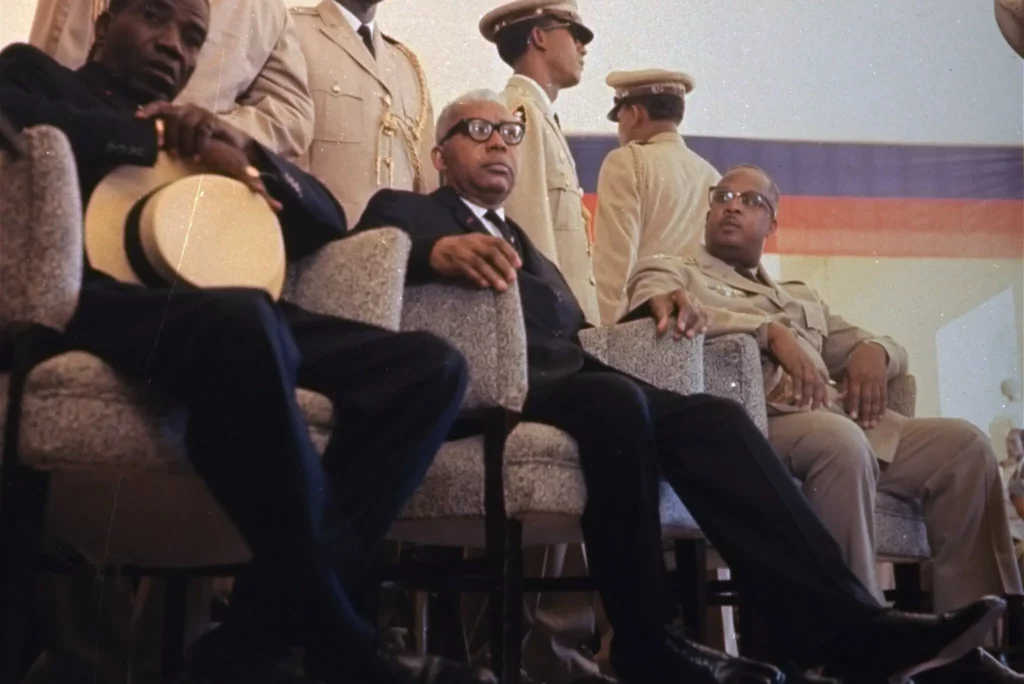
‘President for Life’
A bookish, middle-aged doctor was elected president in 1957.
François Duvalier, who had run a clinic training doctors to treat a disfiguring disease called yaws, promised to free the government from the grip of the country’s elite and represent the other Haiti: the poor with no paved roads, no running water and no education. He called them “the great unacknowledged” and promised to bring them out of their mizè.
The country’s prospects looked good. For the first time in more than 130 years, Haiti was unburdened by crippling international debt. And after frost had damaged Brazil’s coffee crop, the price of the commodity soared, offering Haiti’s government a windfall that it began to spend on irrigation canals and the country’s first big hydroelectric dam.
“The present moment offers Haiti an exceptional opportunity,” the World Bank said in 1954, adding that “this opportunity has to be seized now.”
Instead, Duvalier drove his country into despair.
The 28-year dictatorship he shared with his son Jean-Claude terrorized the nation. The Tontons Macoutes, a militia Duvalier created, attacked every perceived threat, including students and journalists. Hundreds were thrown into a network of prisons Human Rights Watch called the “triangle of death” and never heard from again. Others were shot on the street, their bodies left in heaps. In 1964, Duvalier declared himself “president for life.”
Professionals fled the country, taking their expertise. By 1970, more Haitian doctors were practicing in Montreal than in Haiti, one journalist, James Ferguson, estimated.
Duvalier perfected the corruption of past leaders, dipping into the state tobacco monopoly and skimming the pay of Haitian workers sent to Dominican sugar mills. His government outright extorted citizens, particularly through its “National Renovation Movement,” demanding that they donate to the construction of what jurists called a “purely fictitious” city named “Duvalierville.”
Initially, the Duvalier government found an ally in the Cold War struggle unfolding across the hemisphere: the United States.
After a Haitian diplomat voted in favor of ejecting Cuba from the Organization of American States, the American government agreed to fund a large airport — named the François Duvalier International Airport — in Port-au-Prince. The arrangement was widely cast by journalists as a tit-for-tat agreement, but the United States Agency for International Development soon closed its freshly built headquarters in Port-au-Prince because of corruption in the Duvalier government.
After a second heart attack, Duvalier, nicknamed “Papa Doc,” had the country’s Constitution changed so that his young son, just 19, could replace him. Known as “Baby Doc,” Jean-Claude Duvalier continued his father’s reign of terror and graft. By the time protests forced the dictator and his family to be spirited away on an American plane to France, he and his relatives had stolen hundreds of millions of dollars, having treated the state like a “royal fiefdom,” a Haitian government investigation found.
Over that time, the country’s misery deepened. Fewer than one in four adults could read, according to a 1985 World Bank report. From a quarter to half of Haitian children suffered severe malnutrition. Many were in the countryside, where coffee farmers earned even less than they had before the Duvalier regime.
After Jean-Claude Duvalier fled the country, the coffee tax was removed for the first time in more than a century. But it was too little, too late.
Farmers had been growing coffee more or less the same way since the days after the revolution, in very small garden plots where the trees seeded themselves naturally, mixed with banana and orange trees, as well as vegetables. There had never been a serious push by the government to develop the industry with new technology, fertilizers or new varieties of coffee.
The bountiful harvests that continued for generations and paid the nation’s debts were “like magic,” said Jobert Angrand, the former head of the National Coffee Institute of Haiti and a recent minister of agriculture.
By the 1980s, the magic had worn off. Poor farmers began to cut down their coffee trees and plant quicker-growing cash crops instead, leading to erosion. In Dondon, farmers who once couldn’t see the Citadelle from their fields because of the thick foliage above them suddenly had a clear view. Coffee exports began to plummet.
“This is the problem in Haiti,” said Mr. Angrand. “There is no investment in the countryside.”

‘All the Better’
The Americans arrived at the gates of President Jean-Bertrand Aristide’s house before dawn on Feb. 29, 2004. Flanked by security officers, a U.S. diplomat climbed the mansion’s steps to see the president — and ask for his resignation letter before whisking him into exile.
Mr. Aristide, a former Catholic priest who had railed against the dictatorship from his pulpit in the slums, and the first lady, Mildred Aristide, stepped into a diplomatic car to the airport and boarded an American plane from the tarmac.
Their destination was unknown even then. They were simply being removed from the country.
As the plane circled in the air, its blinds down, French officials frantically called the leaders of African countries, searching for someone willing to host Haiti’s soon-to-be former president, according to Mr. Burkard, the French ambassador to Haiti at the time. Finally, after three rejections, President François Bozizé of the Central African Republic agreed.
After Mr. Aristide landed in Bangui — a capital thousands of miles from his own, on a different continent — he made reference to Toussaint Louverture, the Haitian revolutionary leader. He had been abducted by French soldiers in 1802 after signing a peace agreement, carted off to France and thrown in prison without a trial in the frozen Jura Mountains, where he died a year later.
Louverture’s famous line is a standard of Haitian history books: “In overthrowing me, you have done no more than cut down the trunk of the tree of Black liberty in Saint-Domingue. It will spring back from the roots, for they are numerous and deep.”
Mr. Aristide changed it slightly. “In overthrowing me they have uprooted the trunk of the tree of peace,” he said, “but it will grow back because the roots are Louverturian.”
Later, he was more pointed: He told American news outlets by phone that he’d been kidnapped.
Haiti’s two former colonizers described their joint action as both a rapprochement after their friction over the Iraq War and a humanitarian mission to avoid a looming civil war in Haiti. Haitian rebel soldiers were in the north, threatening to soon take the capital and Mr. Aristide. Pro-Aristide and anti-Aristide protesters had clashed violently in the streets. Secretary of State Colin L. Powell called Mr. Aristide’s claim of being kidnapped “absurd.”
But Mr. Burkard, the French ambassador, told The Times in a recent interview that France and the United States had effectively orchestrated “a coup” against Mr. Aristide by forcing him into exile.
And while Mr. Aristide’s demand for financial restitution from France was not the principal reason for his removal, Mr. Burkard said, his ouster had an added benefit: It ended Mr. Aristide’s noisy campaign, which had landed with the force of a grenade, threatening to blow up relations with all former colonies.
That made his removal “all the better,” said Mr. Burkard.
Mr. Aristide had been ousted before, in a military coup in 1991, less than a year after winning the first democratic election since the dictatorship. But he was re-elected nine years later and launched his restitution campaign in 2003, on the 200th anniversary of Toussaint Louverture’s death.
With the money Haiti shipped to France for the so-called independence debt back in hand, he said, his country could invest in all the things it had never been able to afford, including schools, hospitals, roads, tractors and water for peasants.
Tallying Haiti’s losses, he presented a bill: $21,685,135,571.48.
The figure, both for its size and its precision, was mocked by French diplomats and denounced by some Haitian intellectuals as an attempt by Mr. Aristide to distract from the country’s woes and maintain his grip on power. But, as the estimates vetted by economists and historians consulted by The Times show, his calculations may have been close to the mark — and possibly even modest.
The Aristide government had hired international lawyers to assemble arguments and a researcher to dig through French archives. On the nation’s 200th Independence Day, Mr. Aristide celebrated before huge crowds on the lawn of the national palace, promising to replace a 21-gun salute with 21 things he would do once the restitution was paid — a retort to the cannons fired by the Baron of Mackau’s fleet centuries ago.
“Why after 200 years, is Haiti this impoverished?” Mr. Aristide asked during a rare interview with The Times at his home office in the suburbs of Port-au-Prince, a large gold-painted bust of Toussaint Louverture on a table behind him.
“We were condemned to live in poverty — not just poverty, but misery,” he said. “An abject misery tied to 1825.”
Since his departure, none of his successors have pressed the issue. In 2003, the French government dismissed his claim of restitution. Twelve years later, Mr. Hollande acknowledged that France did indeed owe Haiti a debt — before his staff quickly said it was not a monetary one.
Still, Mr. Aristide argued that he and others had “seeded the field,” noting that while the Haitian revolution started in 1791, it took years before enslaved people became free, and years more until they claimed independence.
“It’s not finished,” he said.
‘Resign yourself to mizè’
The tinny scrapes of metal shovels on concrete echo outside the Vincent Ogé coffee cooperative. Using methods that haven’t changed for generations, workers scoop up the coffee beans drying in the sun and toss them in wheelbarrows.
As dusk nears, the farmers begin to arrive, carrying the season’s first crop directly from their gardens in buckets and in thick plastic sacks.
“All the benefits of coffee were never returned to the peasants,” says Françisque Dubois, the local coffee cooperative’s founder.
“Even if the money came back, it wouldn’t reach us,” he says. “It would go into the pockets of the gwo moun — the big shots,” he adds, “like Duvalier, who put it all in Swiss banks.”
Mr. Dubois greets the arriving farmers from a straw chair in the dim processing room. Beside him, a barefoot worker dips each farmer’s load into a bucket of water to remove any cherries that have been hollowed out by pests. Then, the cherries’ flesh is removed, and the remaining seeds — known widely as beans — go to a cistern to ferment. The process hasn’t changed all that much since the coffee boom of Saint-Domingue.
Very few of the coffee farmers in Dondon had heard of the so-called independence debt, despite the pivotal roles their ancestors played in paying it. The handful who had a notion said they were too full of other worries to ponder what it meant for the nation’s evolution. They were busy battling mizè.
Hunger. Sickness. Unpaid school fees. The crippling cost of a father’s funeral. One man steps out of the cooperative, runs his hands over his face, and says forlornly that he can’t keep anything in his head since his grandchild died of fever.
“You have to resign yourself to mizè,” said Rose Melanie Lindor, a 70-year-old coffee farmer on the other side of town. Five of her 10 children died.
By the time Etienne Roberson stepped into the cooperative, the sun had painted the trees with honey. He almost made it through high school before his family stopped being able to pay the fee, and knew more than most about the so-called independence debt.
“It was bad for the country,” he said. “When we were paying it, that’s when the country became poor.”
Across the dirt road, Ms. Present stopped picking cherries from her coffee trees earlier that day, taking a rare moment to contemplate her nation’s past and her ancestors’ parts in shaping it.
“If we have our liberty now because of coffee,” she said finally, “I’m proud of that.”
Then, she got back to work.



